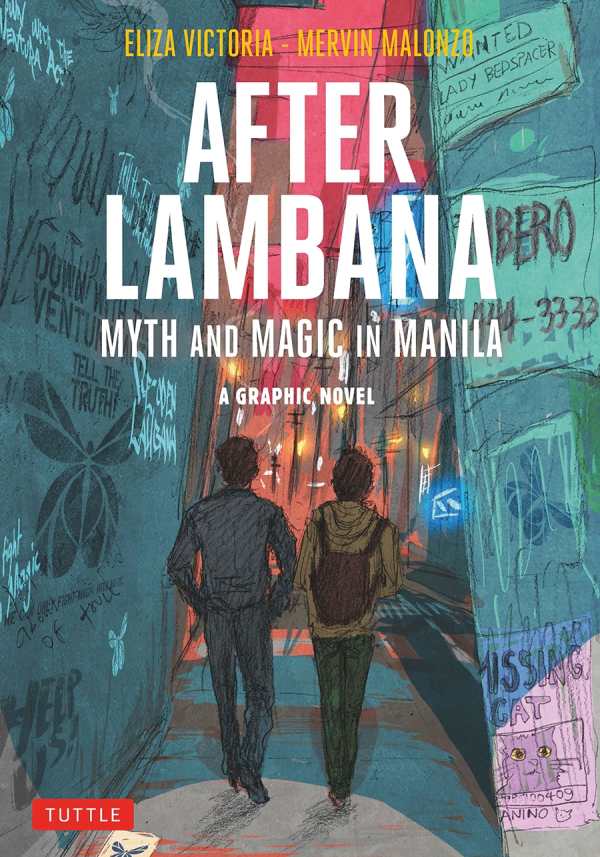After Lambana
Myth and Magic in Manila
A noir set in contemporary Manila, the graphic novel After Lambana combines elements of magic with Filipino mythology.
Conrad has a terminal disease called Rose. He meets with a mysterious figure, Ignacio, who says that he can help. Ignacio is one of the Diwata, fairies native to a magical realm, Lambana, that once maintained open pathways and trade with human beings. Many Diwata still live in the human world, even after the path to Lambana closed a decade before. Through Ignacio’s connections, Conrad is given medicine to lessen his pain. During their travels together, the secrets of Rose, and the links between Conrad’s and Ignacio’s families, are revealed.
Showcasing traditional Filipino culture and a modern vérité style, much of the book’s appeal lies in the convincing way that the art and writing integrate city life with the presence of magical creatures. For example, social media accounts track the movements of doppelgänger “white shadows”; human laws restrict the Diwata, but can’t prevent romantic relationships and other complications from arising between them. Color is a key throughout, used to illustrate magical creatures, distinguish between settings, and contribute to beautiful, hypnotic images of city sights, like a rail car’s interior and an outdoor midnight bazaar.
A compelling story about the consequences of mistakes and the difficulties of redemption, After Lambana is a fascinating and memorable graphic novel.
Reviewed by
Peter Dabbene
Disclosure: This article is not an endorsement, but a review. The publisher of this book provided free copies of the book to have their book reviewed by a professional reviewer. No fee was paid by the publisher for this review. Foreword Reviews only recommends books that we love. Foreword Magazine, Inc. is disclosing this in accordance with the Federal Trade Commission’s 16 CFR, Part 255.

